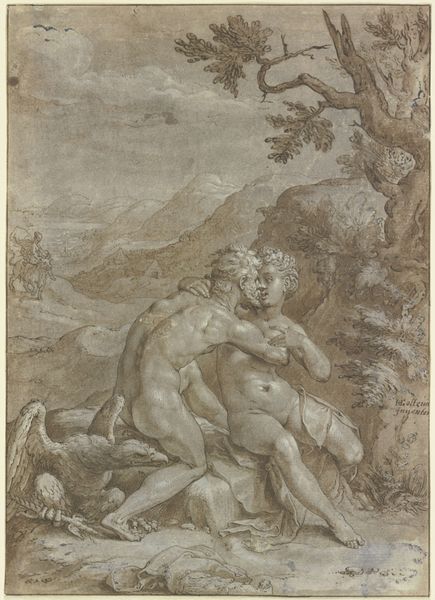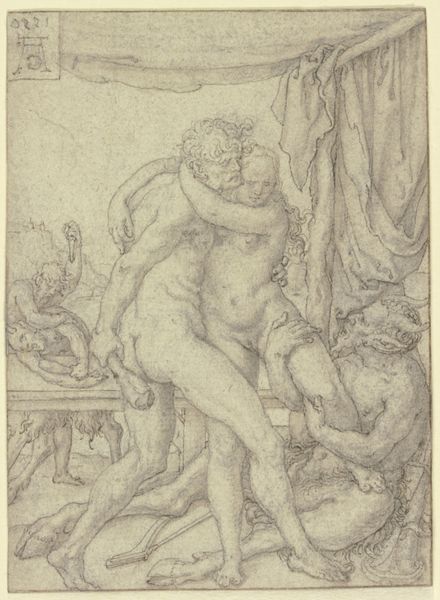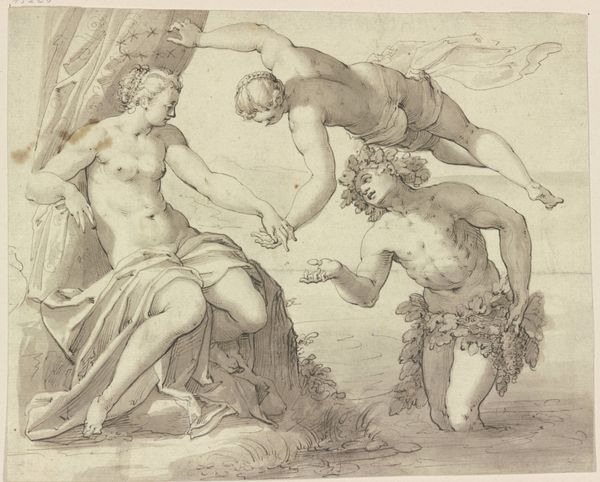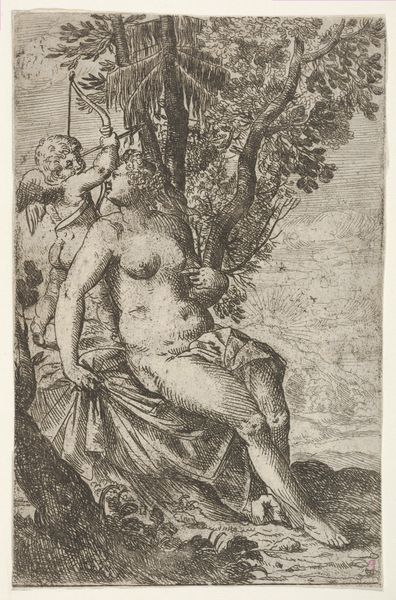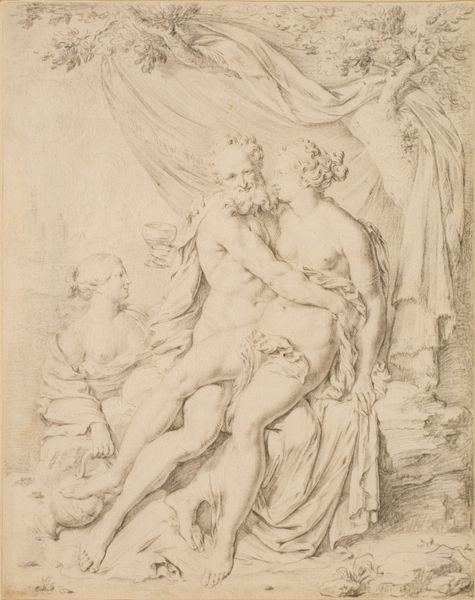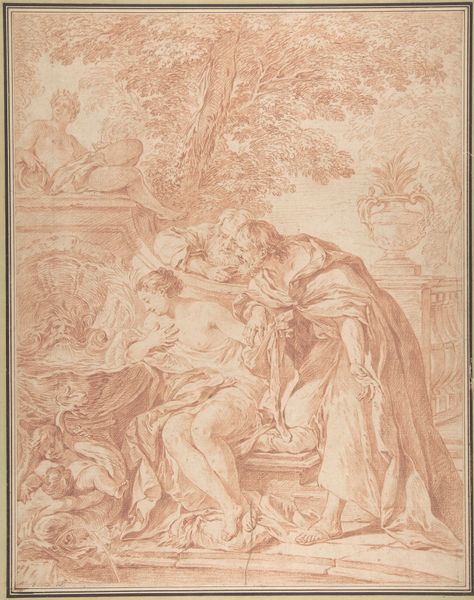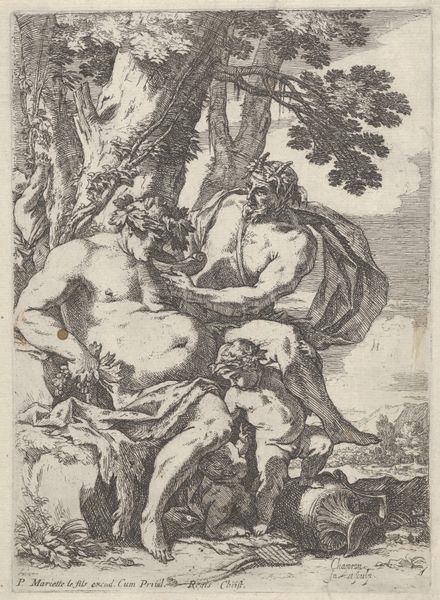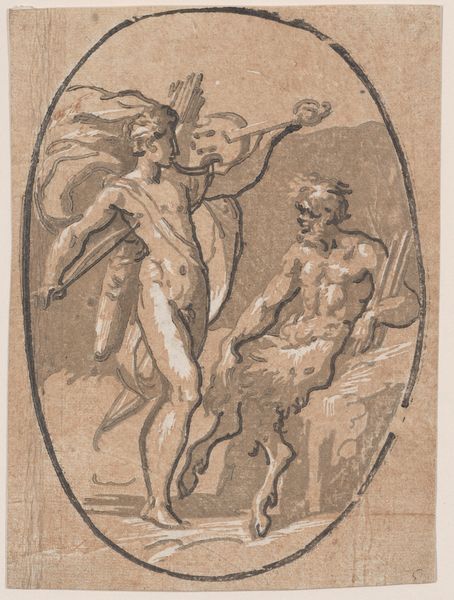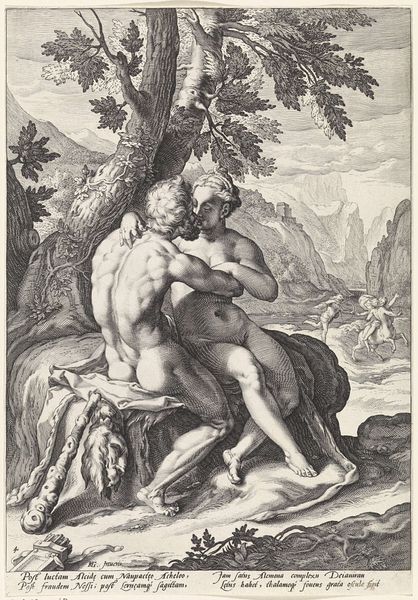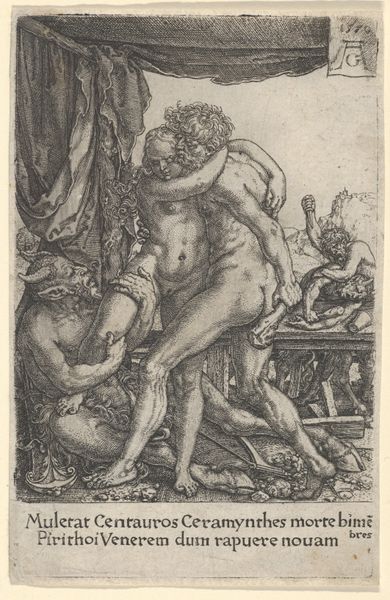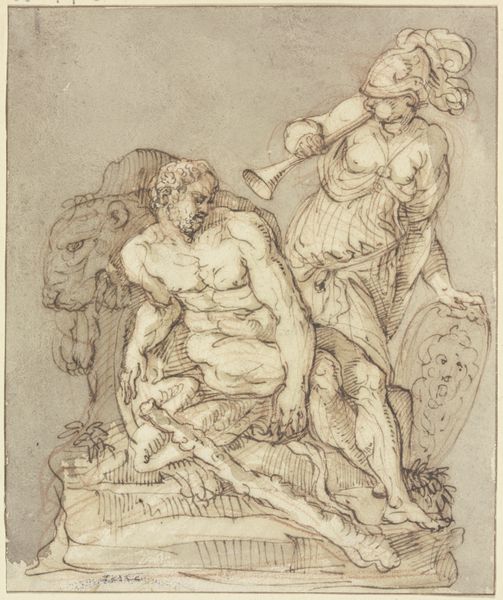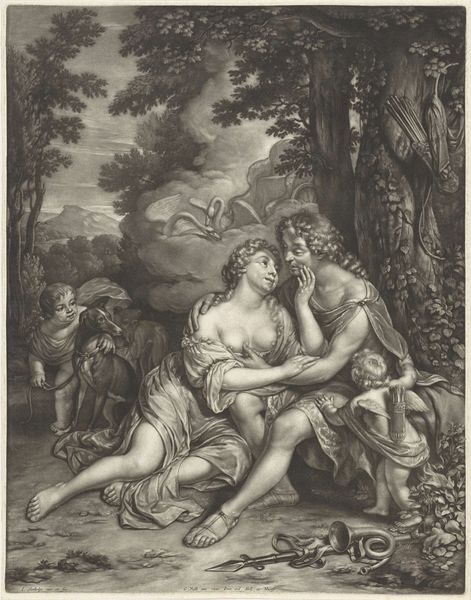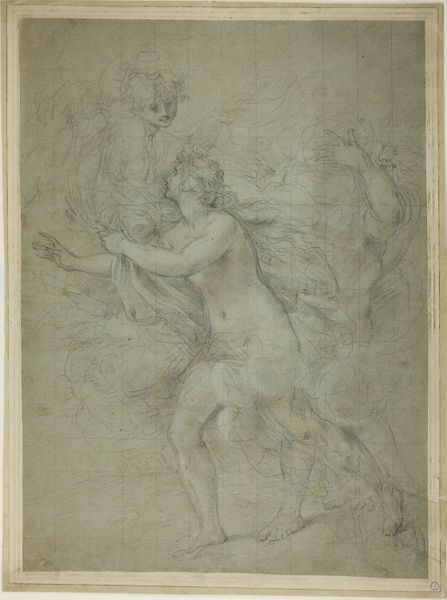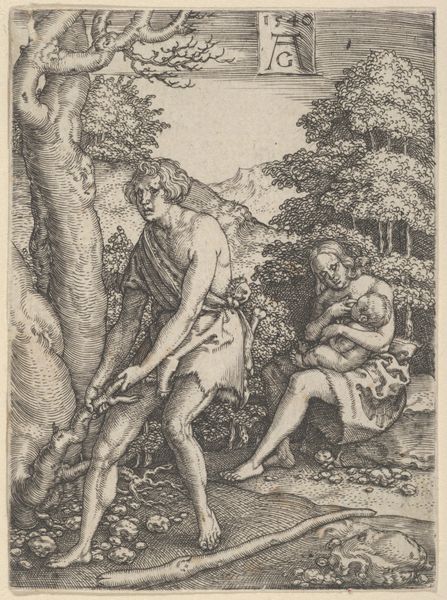
drawing, ink, indian-ink
#
drawing
#
figuration
#
11_renaissance
#
ink
#
indian-ink
#
line
#
history-painting
#
italian-renaissance
#
nude
Copyright: Public Domain
Editor: This is Hendrick Goltzius’s drawing, "Hercules and Dejanira," created around 1590 using ink. I’m struck by how the embrace between the figures contrasts with the surrounding landscape. What do you see in this piece? Curator: I see a concentrated dance of symbols. Hercules, the hero, intertwined with Dejanira, set against an Arcadian backdrop where even Cupid plays. Their bodies, rendered with such deliberate musculature and curves, represent not just physical forms but embodiments of virtue and desire locked in time. Do you notice the club at Hercules' side? Editor: Yes, it’s almost like a discarded prop. Does that suggest anything about his character? Curator: Precisely! His strength is laid aside. He’s vulnerable here, almost surrendering to the intoxicating influence of love. This piece reflects the Renaissance fascination with classical ideals. Note how they have actually been updated and tailored through very contemporary lenses to suit new audiences and their psychological make up. Look at the tension and vulnerability portrayed. What do you read into the choice of making this scene so intimate and seemingly private, even though their world is so grand? Editor: I think maybe it’s a reflection of inner turmoil. Hercules may have been brave but even heroes like him, in these more modern depictions, have vulnerabilities. It makes this artwork still meaningful to me as a student. Curator: Absolutely. The visual memory encoded here reminds us that heroism isn’t just about conquering monsters but facing our inner demons too. Editor: That's fascinating; thanks for making that clear for me. I am now aware how the figures function almost as metaphors, going beyond merely representations of mythological figures to more humanised experiences and emotions.
Comments
stadelmuseum about 2 years ago
⋮
After his return from Italy in 1591, Goltzius increasingly concentrated on designing compositions which other engravers then realised for his publishing house. The two drawings obj. nos. 1792 Z and 1793 Z are examples of such designs. While Goltzius used the pen only sparsely for the outlines, he modelled the bodies with a brush and set delicate accents of light with white opaque paint. He did not draw the line structure of the engraving but created a tonal and painterly chiaroscuro effect with generous brush washes, which the engraver then had to transfer into the hatching patterns of the copperplate.The motifs of obj. nos. 1792 Z and 1793 Z belong to a series of four ""Loves of the Gods"". Hercules is depicted with his mistress Dejanira; in the background he shoots the centaur Nessos while the latter tries to kidnap Dejanira.
Join the conversation
Join millions of artists and users on Artera today and experience the ultimate creative platform.
